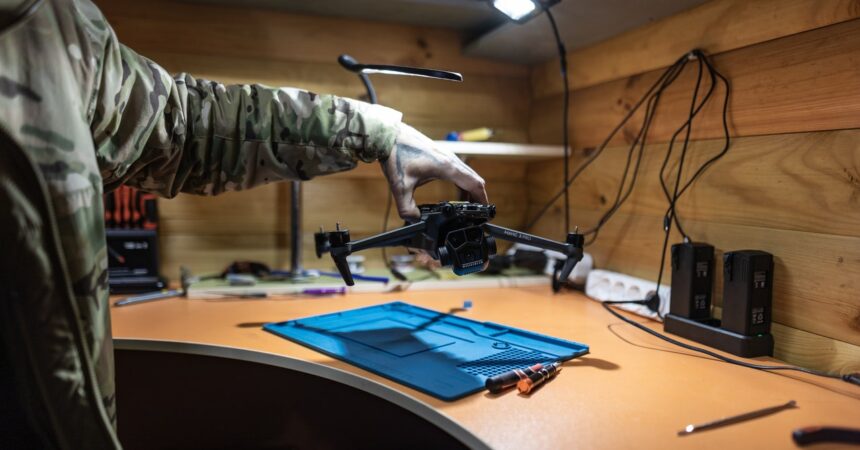The Evolving Landscape of Electronic Warfare: Insights from the Ukraine Conflict
The ongoing conflict in Ukraine has drastically reshaped the nature of modern battles, highlighting the critical role of electronic warfare (EW) in contemporary military strategy. As tensions escalated in 2022, both Russia and Ukraine relied heavily on EW to gain a tactical advantage. This post explores the complexities of electronic warfare in the current conflict, focusing on the strategies employed, advancements in technology, and the future of this domain.
Understanding Electronic Warfare: A Tactical Overview
Electronic warfare encompasses the use of electromagnetic spectrum techniques to disrupt, deceive, or deny enemy forces the ability to communicate and operate effectively. At its core, EW consists of three main components: electronic attack (jamming or disrupting communications), electronic protection (safeguarding your own operations), and electronic support (gathering intelligence).
Russia’s Approach to Electronic Warfare
Initially, Russia’s strategy centered around a more traditional and static battlefield model. As highlighted by experts, the Russian military employed significant but cumbersome systems like the Infauna, a radio-communication targeting vehicle, and the Krasukha-4, designed to scramble aerial sensors from a distance of up to 180 miles. However, their reliance on large systems proved limiting. The deployment of these assets assumed a stable battlefield environment, which quickly became outdated in the face of Ukraine’s agile tactics.
Moscow’s inability to adapt its communication strategy contributed to significant operational failures. Reports from the frontlines indicated that Russian forces grappled with poor communication, which exacerbated their overall effectiveness. This suggests that a more mobile, adaptable approach to electronic warfare could have altered their prospects in the conflict.
Ukraine’s Agile Electronic Warfare Strategy
In stark contrast, Ukraine quickly recognized the need for a flexible, iterative approach to electronic warfare. Instead of large, unwieldy systems, Ukrainian defense tech startups like Kvertus focused on developing a range of smaller, more adaptable devices. Their product lineup expanded rapidly, transitioning from a single shoulder-mounted anti-drone gun at the war’s onset to a diverse array of solutions, including drone-jamming backpacks and installations for radio towers.
Ukraine’s reliance on portable EW systems, such as the Bukovel-AD, exemplifies their strategy of creating effective yet affordable electronic warfare solutions. The Bukovel-AD, designed to fit in the back of a pickup truck, underscores the blend of mobility and effectiveness that Ukraine sought in the face of overwhelming Russian forces.
Achieving Adaptability and Iteration
The success of Ukrainian EW strategies can be attributed to their focus on adaptability. With the ability to quickly modify and produce equipment in response to battlefield dynamics, Ukraine has been able to stay one step ahead of Russian tactics. For instance, the Eter system can detect Russian jamming signals, allowing Ukrainian forces to counteract and target them effectively. This real-time responsiveness is critical in such a rapidly evolving conflict.
Kvertus’ CEO Yaroslav Filimonov noted the exponential growth in production, stating that while they started with "tens" of devices in 2022, they ramped up to "thousands" by 2023. This adaptability not only reflects a capable industrial response but also a deep understanding of the evolving needs on the battlefield.
The Trade-offs in Electronic Warfare
As warfare advances, experts emphasize that the effectiveness of EW is not only about having technical superiority but also about economics and tactics. The complexities of jamming require high power to cover a large area, which can result in cumbersome equipment. Therefore, military forces must carefully balance the desire to disrupt enemy communications with the logistical challenges posed by deploying larger systems.
Clark points out that jamming efforts can create an "electromagnetic no-man’s-land," where GPS and cellular communications become inoperative—a critical vulnerability in modern warfare. Nevertheless, too much power concentrated in a single system may result in missed opportunities for broader impact.
Conclusion: The Future of Electronic Warfare
The Ukraine conflict serves as a real-time laboratory demonstrating the potential and limitations of electronic warfare. While Russia’s traditional approaches faced significant challenges, Ukraine’s innovative and agile methods highlight the importance of adaptability in modern combat. As technology continues to evolve, the role of electronic warfare in military strategy will become increasingly vital, shaping the outcomes of future conflicts.
In the years to come, countries around the world will likely take note of these lessons, investing in electronic warfare capabilities that emphasize mobility, adaptability, and real-time responsiveness. The landscape of warfare is changing, and those who can adeptly navigate the electromagnetic spectrum will hold a decisive advantage on the battlefield.










